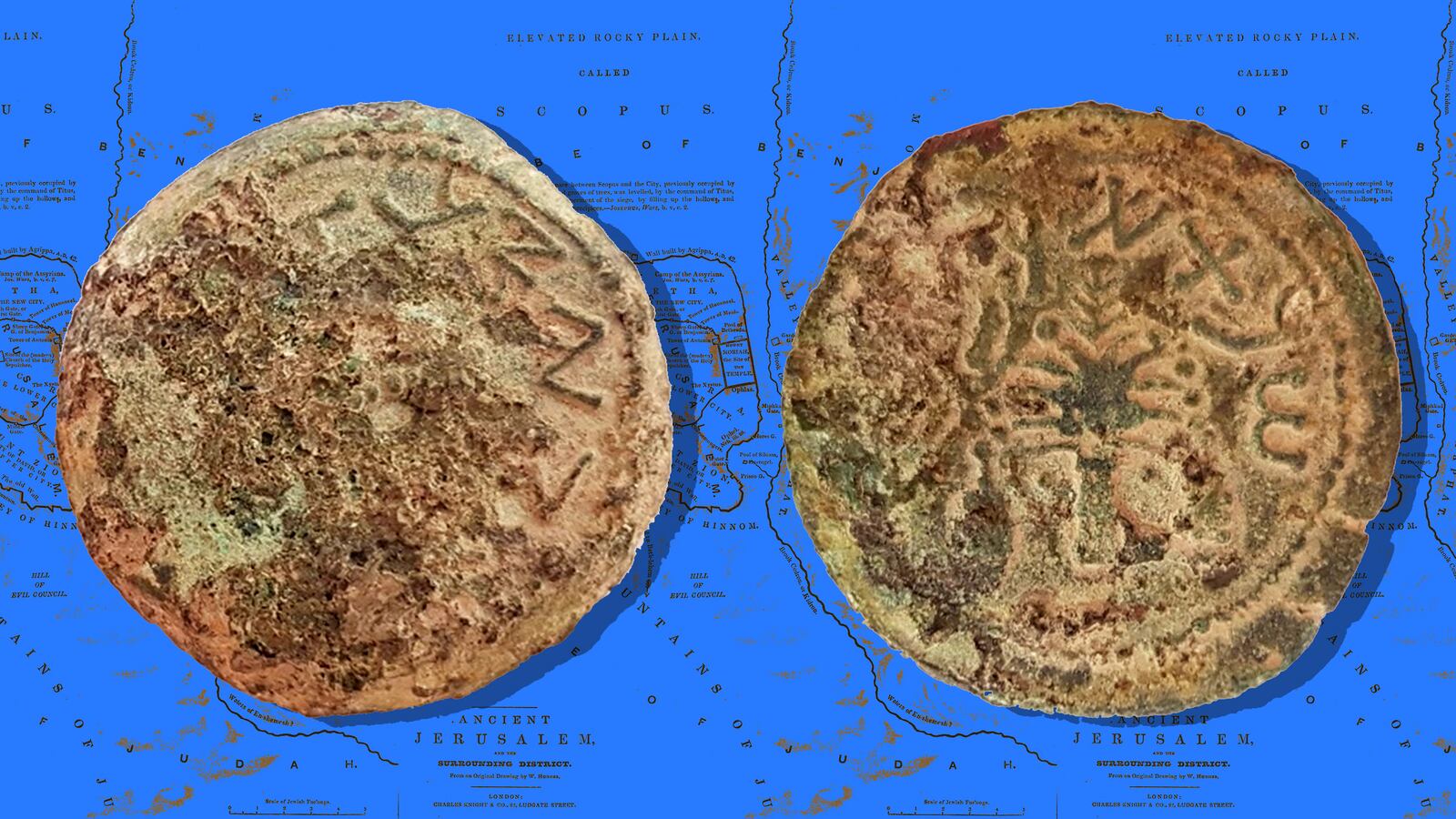This past week Americans celebrated their victorious revolution against the British. Roughly two millennia ago, a less successful group of revolutionaries were hiding in the drainage system of Jerusalem awaiting their death. According to the historian Flavius Josephus, almost 2,000 Jewish rebels were slaughtered by Roman soldiers for their efforts to win freedom from the Roman Empire, and now historians may have unearthed the evidence of the last moments of this group’s existence.
A rare bronze coin, minted in 69-70 CE during the Jewish Revolt, was unearthed in a drainage ditch that runs underneath Rehov Haggai, the main road for ancient pilgrims who were making the journey up to the (Second) Temple in Jerusalem. The 600-meter ditch lies beneath what is now the City of David National Park.
What makes this discovery significant is that the coin was minted in Jerusalem, in the waning moments of the Jewish rebellion against Rome. The revolt began in 66 and lasted until 70, when the Romans ransacked Jerusalem and destroyed the Jewish Temple, carting her treasures back to Rome for display as the spoils of war. Never ones to leave work unfinished; the Romans spent several more years rounding up revolutionaries taking refuge in enclaves outside the city. The most famous instance is the siege of Masada around 73-74 CE, at the conclusion of which, according to the legend told by Josephus, the rebels committed suicide rather than be captured.
For the rebels at Masada, the writing was on the wall, but in the early years of the revolt, leaders in Jerusalem minted coins that proclaimed optimistic statements like “For the Freedom of Zion.” They were filled with hope and fully expected to succeed. This newly found coin, however, is somewhat different. It was minted in year four of the rebellion, almost on the cusp of the destruction of the Temple. Instead of confidently declaring freedom, the coin instead states, “For the Redemption of Zion.”
The change expresses the shift in mindset that took place among the revolutionaries holed up in Jerusalem in final year. Israel Antiquities Authority archaeologist Eli Shukron told the Times of Israel that “the difference between ‘freedom’ and ‘redemption’ expresses the change occurring in the rebels’ subconscious, and the reality of those days.” It is almost as if they knew that the end was not far away and were imploring God for help, as people still do to this day.
Drawing upon Josephus’ description of the Jewish War as well as other archaeological discoveries found in the area, Shukron hypothesizes that the coin was dropped there as rebels hid in the drainage ditch before the fall of the city. “It’s possible that this coin… was placed in the pocket of a Jerusalemite hiding from the Romans in underground warrens,” he said, “or maybe it rolled into the drainage ditch while the coin’s owner walked the streets of Jerusalem 2,000 years ago.”
However the coin was lost, it is significant. Today, we rarely look at our coins except to count them. When traveling abroad we might examine foreign currency more carefully out of curiosity, but few give the iconography and inscriptions that much thought. In the ancient world, things were very different. Coins were minted by hand and, as such, every coin was unique. This made the practical task of identifying counterfeit money that much more difficult. As a result people had to examine their coins and decipher their imagery. This made coins a key means by which propaganda was disseminated, key events were valorized, and leaders touted. Think of the visual importance and function of the Trump-Kim summit commemorative coins, but on all your currency. The coinage of the Great Revolt is no different from other ancient currency. Thus, the discovery of this new example gives us a glimpse into the declining morale of ill-fated rebels in Jerusalem.






